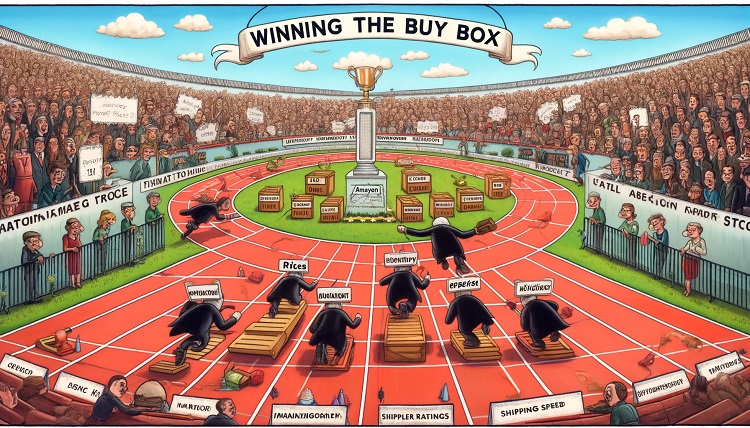Amazon PPC Advertising – Benefits of Using Advertising Services
Understanding Amazon PPC Advertising Services: A Comprehensive Expert Guide
Amazon PPC (Pay-Per-Click) advertising services are a critical component of any successful strategy on Amazon. For businesses looking to gain visibility and drive sales on the platform, understanding how Amazon PPC works and how to optimize campaigns is essential. As competition increases, utilizing Amazon PPC advertising services effectively can help brands stand out and boost revenue. In this expert guide, we will explore the key elements of Amazon PPC advertising services and how they contribute to success on the marketplace.
What Are Amazon PPC Advertising Services?
Amazon PPC advertising services allow brands to bid on specific keywords to promote their products within search results and on product pages. These services operate on a pay-per-click model, meaning that advertisers only pay when a potential customer clicks on their ad. With the right approach, Amazon PPC can significantly increase product visibility and drive higher conversion rates.
However, managing Amazon PPC campaigns effectively requires knowledge and ongoing optimization. That’s where professional Amazon PPC advertising services come in. An expert agency will handle everything from keyword research to bid management, ensuring that your campaigns are not only cost-efficient but also highly effective.
Types of Amazon PPC Ads
Understanding the different types of Amazon PPC ads is essential to making the most of your advertising strategy. There are three main types of PPC ads on Amazon:
- Sponsored Products: These ads promote individual product listings within Amazon’s search results or product pages. Sponsored Products ads are one of the most popular formats due to their direct impact on search visibility and sales.
- Sponsored Brands: This type of ad showcases your brand’s logo, a custom headline, and multiple products. Sponsored Brands ads are great for building brand awareness and driving traffic to your Amazon Store or a landing page.
- Sponsored Display: Sponsored Display ads target audiences across Amazon’s network, as well as external sites, helping brands re-engage shoppers who have already shown interest in their products.
Keyword Research and Targeting
An essential part of Amazon PPC advertising services is effective keyword research. Identifying the right keywords helps ensure your ads appear when potential customers are actively searching for products like yours. Professional PPC services leverage advanced tools and data analytics to identify high-performing keywords that maximize visibility while minimizing costs.
Moreover, it’s not just about targeting popular keywords. Long-tail keywords—more specific search terms—can often yield better conversions at a lower cost. This comprehensive approach to keyword targeting helps brands attract more qualified traffic and improve their return on investment (ROI).
Bid Management and Optimization
Another core aspect of Amazon PPC advertising services is bid management. Managing your bids strategically is crucial for controlling costs and maximizing your campaign’s effectiveness. Expert PPC agencies monitor your campaigns regularly, adjusting bids based on performance metrics such as click-through rates (CTR), conversion rates, and advertising cost of sales (ACoS).
Without proper bid management, brands risk overspending or failing to capture valuable ad placements. Therefore, continuous optimization is key to ensuring your PPC campaigns remain competitive and cost-effective.
Performance Tracking and Reporting
A professional Amazon PPC advertising service will provide detailed performance tracking and reporting. This includes tracking important metrics like impressions, clicks, CTR, ACoS, and sales. Regular reports allow you to understand how well your campaigns are performing and identify areas for improvement. Armed with this data, brands can make informed decisions to refine their strategies and improve overall performance.
Benefits of Using Amazon PPC Advertising Services
- Increased Product Visibility: PPC ads boost your product’s visibility, ensuring that it appears in front of the right audience.
- Improved Sales and Conversions: With targeted ads, you can drive more qualified traffic to your listings, leading to higher conversions.
- Cost Efficiency: A well-managed PPC campaign minimizes wasteful spending and optimizes your ad budget for maximum returns.
- Scalability: Amazon PPC services allow you to scale your campaigns as your business grows, reaching a wider audience without sacrificing performance.
Why Choose Mercato Agency?
At Mercato Agency, we specialize in Amazon PPC advertising services that drive results. Our team of experts handles every aspect of your campaign, from keyword research and bid management to performance tracking and optimization. We work closely with you to create tailored strategies that align with your goals, ensuring your Amazon PPC campaigns deliver the best possible ROI. Contact Mercato Agency today to elevate your Amazon advertising strategy.
Useful Links:
If you feel that The Mercato Agency might be the agency to manage your Amazon PPC Advertising strategy, please use the contact us form below.






